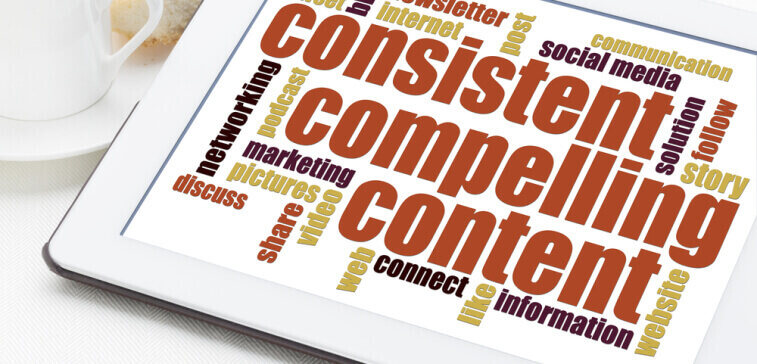When I speak with small and mid-sized business owners I frequently hear objections and questions about the business return from investing in social media marketing. Well, hiring college students to post things for you probably won’t drive results. They are very familiar with social media platforms, but it’s the marketing strategy and content that drive success. And just posting photos of products to sell won’t drive success either.
Consumers are not using social media platforms to be bombarded with sales pitches. They are there to be entertained, inspired, educated, trained, and assisted with some problem.
If your content is not engaging or you are spreading your resources too thinly across too many social media platforms, then you may not see good results. Social media platforms will come and go (remember MySpace?), but your marketing strategy and content should transcend the tools and platforms.
With that said, I have observed these ten tips for social media marketing success:
- Focus on engaging content – The objective of social media is to engage your audience. You get the maximum business benefit when they share your content and spread your message for you or when they click through to your website. You also benefit if they like or comment. That is giving you opportunity to interact with them on a personal level. Have a catchy headline. Provide some entertainment, but better yet help your audience to see something in a new light, to get educated on a topic, or especially to solve a problem (what to make for dinner tonight, how to build a stone wall, how the use of social media tools can save them time,……..you get the idea).
- Be social – Don’t just be on social media posting photos. Be social and interact with your audience and in social media groups. Add your comments and ask questions for the benefit of others. Share content that may also be of interest to your audience. Be sure to reply to comments promptly or thank people for sharing your content.
- Focus on a few social media platforms – Different social media platforms have different audience profiles. For example I recently blogged about the Pinterest audience and tips for that specific platform. You don’t have to be on every social media platform. Some may become more important to you in the future, so you may want to reserve your account name there, but focus on 1-3 that are frequented by your target audience and where you can focus for successful business results.
- Don’t sell – This may surprise you, but marketing is not sales. It enables sales. Marketing is about satisfying customer needs profitably over time. Consumers are not looking on social media for sales pitches of goods and services that don’t benefit them at this particular time. But helping them now or entertaining them may engage them so that they become your customer or do repeat business with you over time. For example, I get sales people trying to connect with me directly on LinkedIn to just send me a sales pitch for services in which I have expressed no interest and do not need now. They are wasting their time and annoying me for wasting my time. I wouldn’t be annoyed if they sent me some information that might help to benefit my specific business.
- Be visual – The most engaging posts on Facebook now are videos that are native uploads to Facebook. The autoplay feature helps them to catch the eye in a cluttered News Feed. A picture is worth a thousand words. Using photos and videos on your selected social media platforms will get you more attention and communicate more information.
- Use hashtags appropriately – Hashtags help people to find your content. A Twitter follower may not see your Tweet in real time, but may search a hashtag for relevant information. Be sure they can find your relevant content. It may also help people searching on Facebook. But be careful on Pinterest. That platform doesn’t like lots of hashtags, so limit yourself to one or don’t use them there. You can research hashtags to use with a tool like hashtagify.me
- Make it easy to get more information – If your audience is engaged and wants to find out more about your goods and services, ensure that’s easy for them to do. Have a link to your website and invite them to click it for more information. But also have a landing page that takes them directly to the information they are looking for. That may not be your homepage.
- Test and change – One of the benefits of social media is that you can test and change your content pretty easily. Analysis of data from each platform will tell you which content and post types are getting the most engagement. Do more of that and less of the ones not driving engagement. Or test multiple visual images with your content. Certain photos and videos will engage your audience better than others. Once you have posted, monitor the data and be prepared to make changes to be more engaging. I am frequently surprised by what content succeeds or does not succeed to accomplish my own marketing objectives.
- Ask for feedback – If you’re not getting feedback or you want to find ways to benefit your audience, ask for feedback. This may be informally in a post or you may want to set up a short survey with a few questions. You may want to offer some incentive for filling out your survey. Surveymonkey.com is an easy tool to create a survey.
- Advertise key content – I’ve blogged before that Facebook (and soon other platforms) will be prioritizing and restricting whether your content is shown to your fans/followers. Your business posts on Facebook now reach less than 6% of your fans organically unless you have a very highly engaged, established fan base. Social media marketing used to be completely free. Now and increasingly in the future, it is pay to play. If you have key content (news, a useful blog post, a great video, etc.), then pay to do social media advertising. If you’re just getting started, pay to advertise how your business can benefit people and make it easy for people to click through to your web site. Social media advertising is still relatively inexpensive compared to traditional advertising. And you can monitor results real-time to make adjustments or to cancel ads that are not working.
I hope these ten tips are useful to drive success from your social media marketing investment. Do you have any comments, experience, or other thoughts about these? Or do you have another tip to add to the list? Please share in comments below so we can all benefit.
Please sign up for my email list to get a weekly email with the blog post of the week. It’s free and no obligation.












